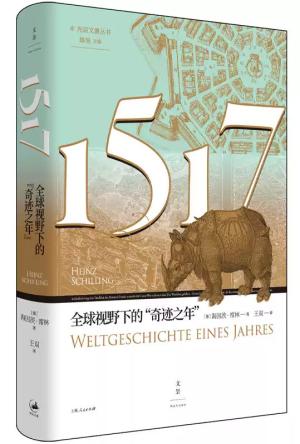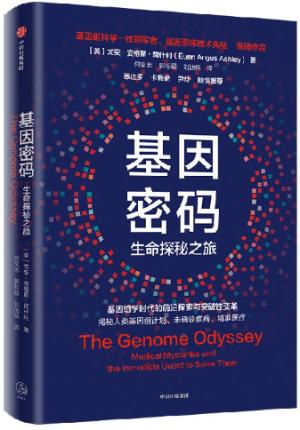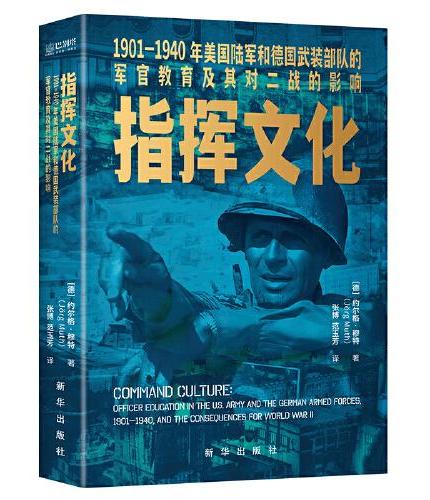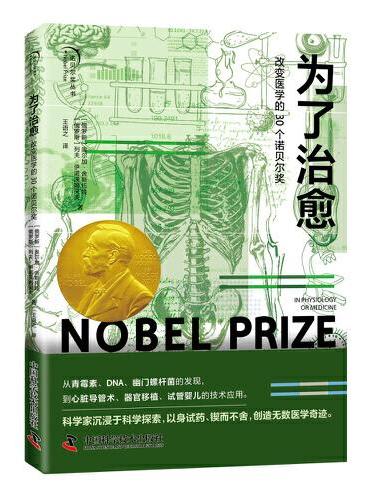新書推薦:

《
1517:全球视野下的“奇迹之年”
》
售價:HK$
96.8

《
经纬度丛书·靖康之败:从太原之战到汴京之围
》
售價:HK$
85.8

《
基因密码:生命探秘之旅
》
售價:HK$
86.9

《
AI摄影与后期:高清细节、真实质感创作与商业应用
》
售價:HK$
107.8

《
旷野人生2:吉姆·罗杰斯的全球投资探险
》
售價:HK$
75.9

《
指挥文化: 1901—1940 年美国陆军和德国武装部队的军官教育及其对二战的影响
》
售價:HK$
85.8

《
科举1300年(中国读书人的阶层跃迁之路,读懂中国历史,无法绕开的科举1300年)
》
售價:HK$
96.8

《
为了治愈:改变医学的 30 个诺贝尔奖
》
售價:HK$
64.9
|
| 編輯推薦: |
|
统计力学无疑是现代物理学的基石之一。考虑到多粒子体系,统计力学是不能绕过的、必备的工具。另外,几乎所有日常的物理学应用都与统计力学有关。《统计力学——非平衡态热力学的随机方法(第二版)英文影印版》作为统计力学的专著,侧重于非平衡态热力学问题,是由至于这一方面研究的学者和研究生不应错过的佳作。
|
| 內容簡介: |
《统计力学——非平衡态热力学的随机方法(第二版)英文影印版》详细地介绍了用统计力学方法处理非平衡态热力学和统计物理问题的研究。其中统计方法包含了经典统计和量子统计。本书研究对象主要为平均能量守恒和熵增的系统。探讨了热噪声、化学反应、扩散等等问题。
《统计力学——非平衡态热力学的随机方法(第二版)英文影印版》可作为统计物理、凝聚态物理、材料科学领域的研究者的参考书,也可供相关领域研究生作为教材使用。
|
| 目錄:
|
Preface v
Classical Statistical Dynamics 1
1. Introduction 3
2. Probability Theory 13
2.1 Sample Spaces and States . . . . . . . . . . . . . . . . . . 13
2.2 Random Variables, Algebras . . . . . . . . . . . . . . . . . 24
2.3 Entropy . . . . . . . . . . . . . . . . . . . . . . . . . . . . 34
2.4 Exercises . . . . . . . . . . . . . . . . . . . . . . . . . . . 39
3. Linear Dynamics 43
3.1 Reversible Dynamics . . . . . . . . . . . . . . . . . . . . . 43
3.2 Random Dynamics . . . . . . . . . . . . . . . . . . . . . . 48
3.3 Convergence to Equilibrium . . . . . . . . . . . . . . . . . 60
3.4 Markov Chains . . . . . . . . . . . . . . . . . . . . . . . . 66
3.5 Exercises . . . . . . . . . . . . . . . . . . . . . . . . . . . 69
4. Isolated Dynamics 73
4.1 The Boltzmann Map . . . . . . . . . . . . . . . . . . . . . 73
4.2 The Heat-Particle . . . . . . . . . . . . . . . . . . . . . . 87
4.3 The Hard-Core Model of Chemical Kinetics . . . . . . . . 94
4.3.1 Isomers and Di_usion in a Force-Field . . . . . . . 95
4.3.2 Markov Dynamics . . . . . . . . . . . . . . . . . . 100
4.3.3 Entropy Production . . . . . . . . . . . . . . . . . 102
4.3.4 Osmosis . . . . . . . . . . . . . . . . . . . . . . . 103
4.3.5 Exchange Di_usion . . . . . . . . . . . . . . . . . 104
4.3.6 General Di_usions . . . . . . . . . . . . . . . . . . 105
4.4 Chemical Reactions . . . . . . . . . . . . . . . . . . . . . 106
4.4.1 Unimolecular Reactions . . . . . . . . . . . . . . . 106
4.4.2 Balanced Reactions . . . . . . . . . . . . . . . . . 107
4.5 Energy of Solvation . . . . . . . . . . . . . . . . . . . . . . 111
4.6 Activity-led Reactions . . . . . . . . . . . . . . . . . . . . 111
4.7 Exercises . . . . . . . . . . . . . . . . . . . . . . . . . . . 119
5. Isothermal Dynamics 123
5.1 Legendre Transforms . . . . . . . . . . . . . . . . . . . . . 124
5.2 The Free-energy Theorem . . . . . . . . . . . . . . . . . . 126
5.3 Chemical Kinetics . . . . . . . . . . . . . . . . . . . . . . 130
5.4 Convergence in Norm . . . . . . . . . . . . . . . . . . . . 137
5.5 Dilation of Markov Chains . . . . . . . . . . . . . . . . . . 146
5.6 Exercises . . . . . . . . . . . . . . . . . . . . . . . . . . . 149
6. Driven Systems 151
6.1 Sources and Sinks . . . . . . . . . . . . . . . . . . . . . . 151
6.2 A Poor Conductor . . . . . . . . . . . . . . . . . . . . . . 152
6.3 A Driven Chemical System . . . . . . . . . . . . . . . . . 155
6.4 How to Add Noise . . . . . . . . . . . . . . . . . . . . . . 162
6.5 Exercises . . . . . . . . . . . . . . . . . . . . . . . . . . . 165
7. Fluid Dynamics 167
7.1 Hydrostatics of a Gas of Hard Spheres . . . . . . . . . . . 168
7.2 The Fundamental Equation . . . . . . . . . . . . . . . . . 171
7.3 The Euler Equations . . . . . . . . . . . . . . . . . . . . . 177
7.4 Entropy Production . . . . . . . . . . . . . . . . . . . . . 178
7.5 A Correct Navier-Stokes System . . . . . . . . . . . . . . 181
Quantum Statistical Dynamics 187
8. Introduction to Quantum Theory 189
9. Quantum Probability 197
9.1 Algebras of Observables . . . . . . . . . . . . . . . . . . . 197
9.2 States . . . . . . . . . . . . . . . . . . . . . . . . . . . . . 204
9.3 Quantum Entropy . . . . . . . . . . . . . . . . . . . . . . 213
9.4 Exercises . . . . . . . . . . . . . . . . . . . . . . . . . . . 217
10. Linear Quantum Dynamics 221
10.1 Reversible Dynamics . . . . . . . . . . . . . . . . . . . . . 221
10.2 Random Quantum Dynamics . . . . . . . . . . . . . . . . 224
10.3 Quantum Dynamical Maps . . . . . . . . . . . . . . . . . 228
10.4 Exercises . . . . . . . . . . . . . . . . . . . . . . . . . . . 236
11. Isolated Quantum Dynamics 237
11.1 The Quantum Boltzmann Map . . . . . . . . . . . . . . . 237
11.2 The Quantum Heat-Particle . . . . . . . . . . . . . . . . . 240
11.3 Fermions and Ions with a Hard Core . . . . . . . . . . . . 256
11.4 The Quantum Boltzmann Equation . . . . . . . . . . . . . 272
11.5 Exercises . . . . . . . . . . . . . . . . . . . . . . . . . . . 281
12. Isothermal and Driven Systems 283
12.1 Isothermal Quantum Dynamics . . . . . . . . . . . . . . . 283
12.2 Convergence to Equilibrium . . . . . . . . . . . . . . . . . 289
12.3 Driven Quantum Systems . . . . . . . . . . . . . . . . . . 292
12.4 Exercises . . . . . . . . . . . . . . . . . . . . . . . . . . . 296
13. In_nite Systems 297
13.1 The Algebra of an In_nite System . . . . . . . . . . . . . 299
13.2 The Reversible Dynamics . . . . . . . . . . . . . . . . . . 300
13.3 Return to Equilibrium . . . . . . . . . . . . . . . . . . . . 302
13.4 Irreversible Linear Dynamics . . . . . . . . . . . . . . . . 306
13.5 Exercises . . . . . . . . . . . . . . . . . . . . . . . . . . . 309
14. Proof of the Second Law 311
14.1 von Neumann Entropy . . . . . . . . . . . . . . . . . . . . 311
14.2 Entropy Increase in Quantum Mechanics . . . . . . . . . . 312
14.3 The Quantum Kac Model . . . . . . . . . . . . . . . . . . 314
14.4 Equilibrium . . . . . . . . . . . . . . . . . . . . . . . . . . 315
14.5 The _-Limit . . . . . . . . . . . . . . . . . . . . . . . . . . 316
14.6 The Marginals and Entropy . . . . . . . . . . . . . . . . . 316
14.7 The Results . . . . . . . . . . . . . . . . . . . . . . . . . . 317
15. Information Geometry 319
15.1 The Jaynes-Ingarden Theory . . . . . . . . . . . . . . . . 319
15.2 Non-Linear Ising Dynamics . . . . . . . . . . . . . . . . . 322
15.3 Ising Model Close to Equilibrium . . . . . . . . . . . . . . 327
15.4 Non-linear Heisenberg Model . . . . . . . . . . . . . . . . 329
15.5 Estimation; the Cram_er-Rao Inequality . . . . . . . . . . 333
15.6 Efron, Dawid and Amari . . . . . . . . . . . . . . . . . . . 337
15.7 Entropy Methods, Exponential Families . . . . . . . . . . 340
15.8 The Work of Pistone and Sempi . . . . . . . . . . . . . . 341
15.9 The Finite-Dimensional Quantum Info-Manifold . . . . . 346
15.10 Araki''s Expansionals and the Analytic Manifold . . . . . 352
15.11 The Quantum Young Function . . . . . . . . . . . . . . . 354
15.12 The Quantum Cram_er Class . . . . . . . . . . . . . . . . . 359
15.13 The Parameter-Free Quantum Manifold . . . . . . . . . . 360
15.14 Exercises . . . . . . . . . . . . . . . . . . . . . . . . . . . 364
Bibliography 367
Index 377
|
|









